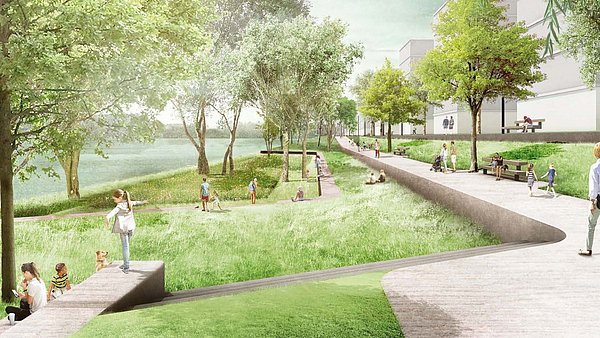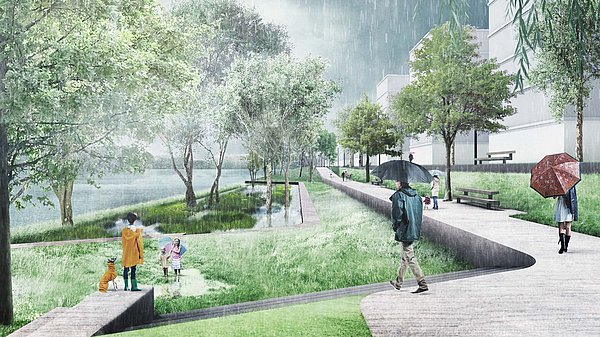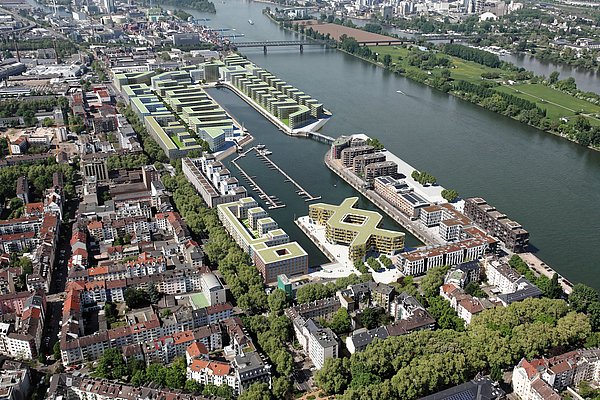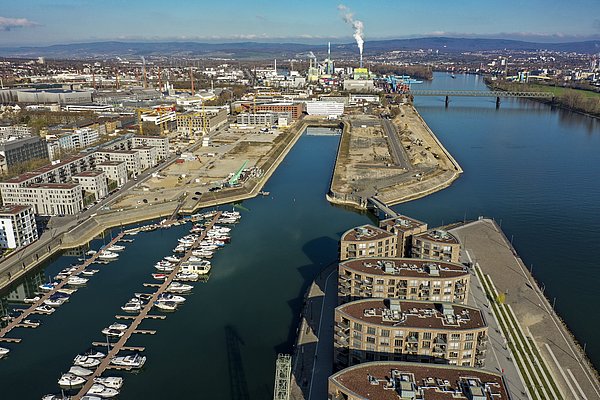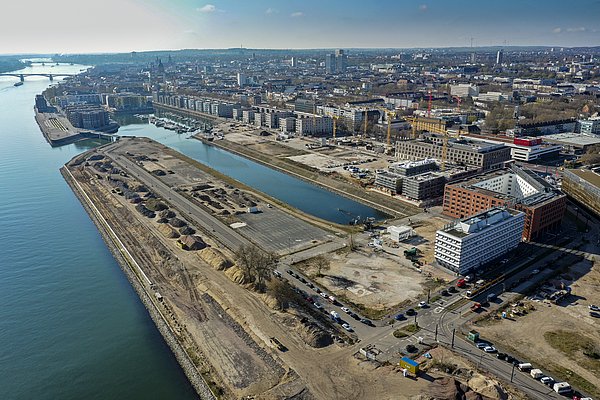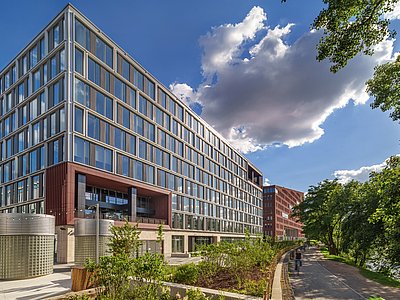Flood Defence in Mainz
“We plant here what comes closest to a natural growth of vegetation on the banks of the Rhine,” Motzko-Lisy reports. “You give nature a push so that the natural vegetation grows quickly and healthily. Then you allow nature to unfold in peace and a natural biotope to emerge. What is innovative here is that we consciously include natural occurrences in our planning instead of fighting them as we did in the past. Here, a social rethinking is taking place that we owe to our young generation.”
The probability of flooding increases – a test for the customs port of Mainz in February 2021
Although the extreme flood events for which the Zollhafen Mainz is designed are statistically very rare, flood protection was taken into account with the utmost care in the planning.
This is because global climate change will lead to extreme weather events becoming more frequent. According to the Federal Environment Agency, annual precipitation will increase in northwestern Europe over the next 80 years, particularly in the winter months. The frequency of heavy precipitation is also expected to increase. This may lead to increased flood events, including along major rivers.
Therefore, in addition to the green floodplain, further retention space is gained in the Zollhafen Mainz by lowering and exposing the historic bank reinforcement at the harbor entrance and the terraced banks. Flood waters above a level of 86.2 m above sea level are channelled in a controlled manner through the canals of the port islands.
At the beginning of this year, the customs port experienced a flood event. Persistent precipitation and thawing weather caused the Mainz water level to exceed 6 meters. However, this flood did not damage the buildings of Zollhafen Mainz that were completed or under construction, according to Wolfram Albert-Göppinger, Construction Manager at omniCon. “The flood protection measures are, after all, already taken into account during construction. The flood in February was not nearly high enough to pose a serious threat to the building fabric. But it was enough to check whether all the cellars were watertight. And as far as I’m aware, all is well.”
Zollhafen Mainz is scheduled for completion by 2025. More and more developers and investors are active on the approximately 30 construction sites, while the first tenants are already moving into their apartments or offices. Due to its proximity to the water, but above all due to the people who will live, work or spend their leisure time here, Zollhafen Mainz will become an urban, lively and livable neighborhood in the coming years.

